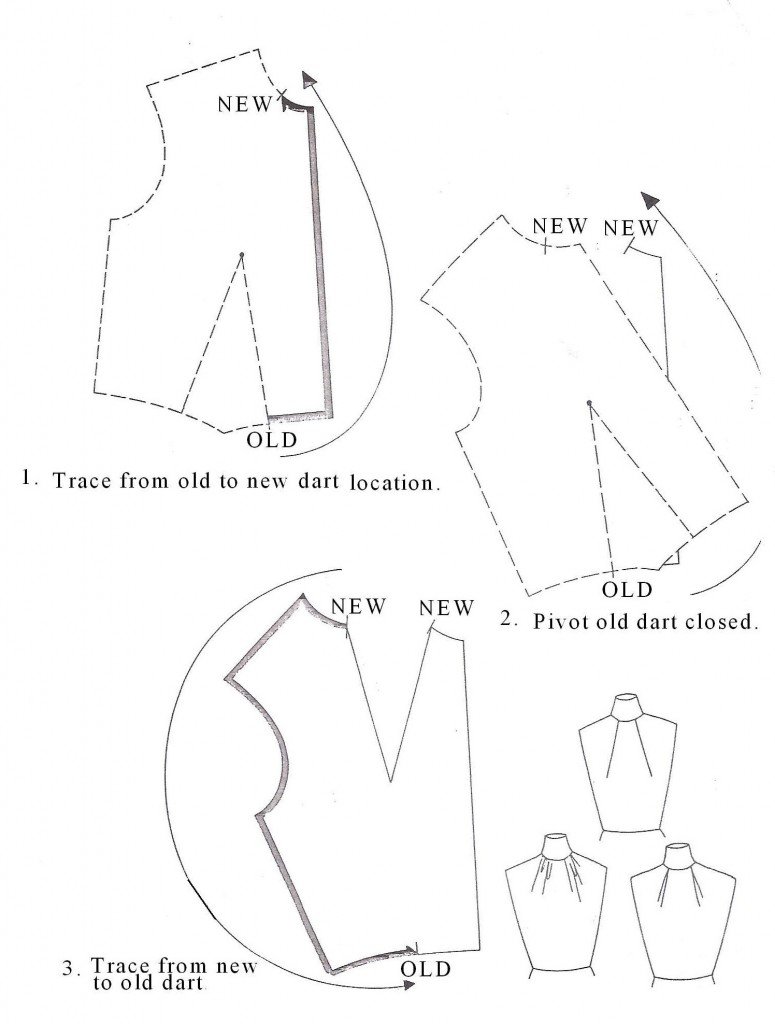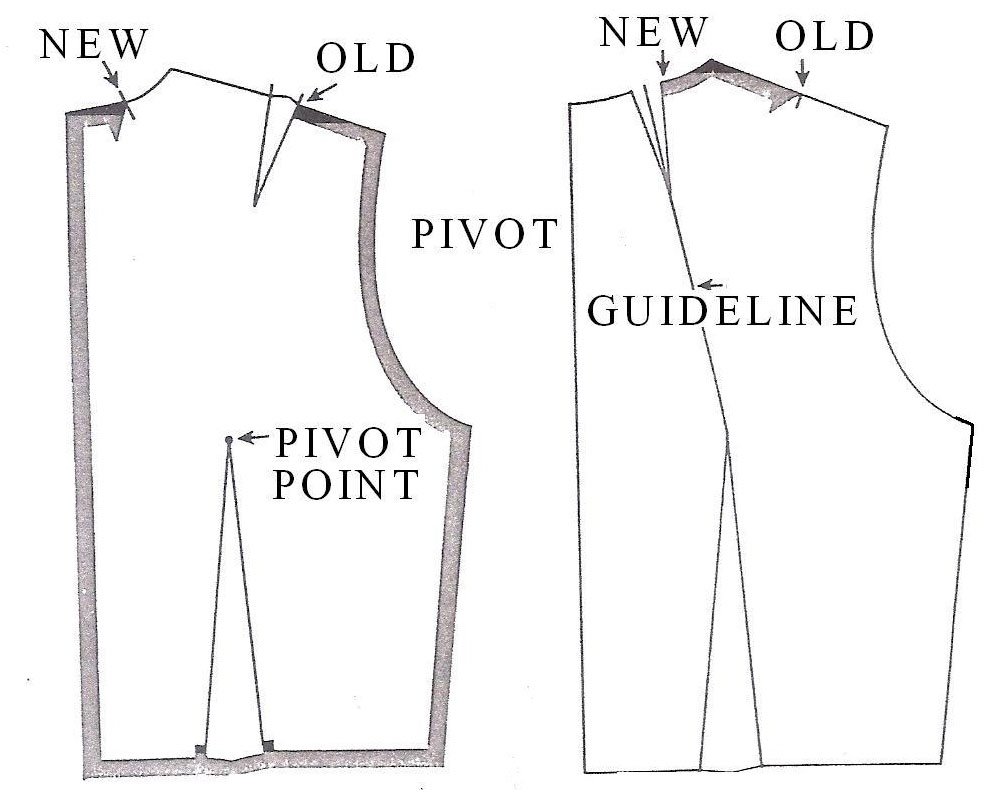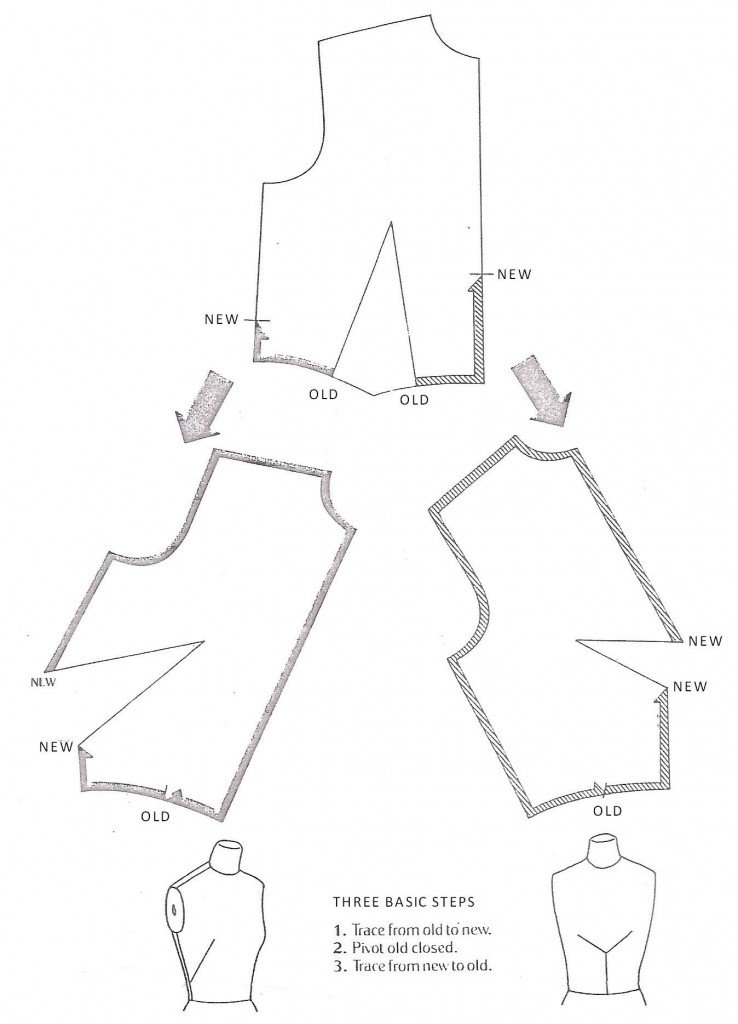How to Pivot a Dart
Pivot to neckline dart on the double
How to pivot one dart into two dart
ON THE DOUBLE
1. To create two darts from old dart, mark two new locations as desired.
2. Trace from old dart to first new dart.
3. Pivot old dart completely closed. Trace from the second new dart position to the old dart.
QUICK SUMMARY
Trace from old dart to first new dart.
Pivot old dart halfway closed.
Trace from first new dart to second new dart.
Pivot old dart completely closed.
SHOULDER DART INTO NECK DART
Mark new dart in center of the neckline. Trace from old shoulder dart to the new location. Pivot the old dart closed, using the waistline dart point as the pivoting point. Draw a guideline from the center of the new dart opening to the waistline dart point. Make the new dart the same length as the original shoulder dart, and draw in the dart lines.
The diagrams on the right illustrate the slash method of moving the shoulder dart into the neck. While the pivoting method is faster, the slash diagrams help to explain why the waistline dart point is used as the pivoting point. The shoulder dart is actually a foreshortened dart that would otherwise extend to the waistline dart.
FRENCH DART
On a sloper as many new dart locations mat be marked as you wish. For a low side seam dart, called a French dart, mark the new location and follow the three basic steps for pivoting.
The French dart is an interesting variation that lends itself to many creative designs. It works particularly well with bias-cut garments, because the French dart can then be balanced on straight grain.
CENTER FRONT DART
The center front dart is not often used, since it changes the grain and shape of center front, and requires that at least part of center front be cut as a seam. This dart is a challenge, but it can be used effectively.
For a center front dart, mark the new location on the sloper, and follow the three basic steps for pivoting.
THREE BASIC STEPS
1. Trace from old to new.
2. Pivot old closed.
3. Trace from new to old.










Comments are closed.